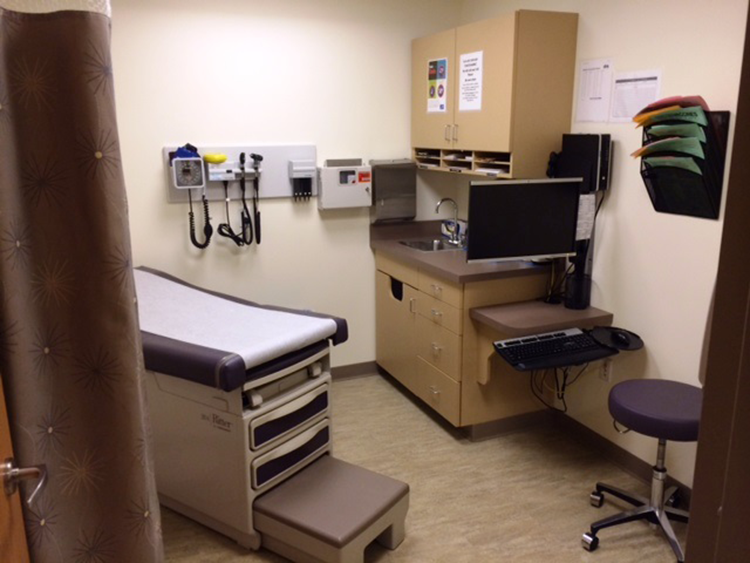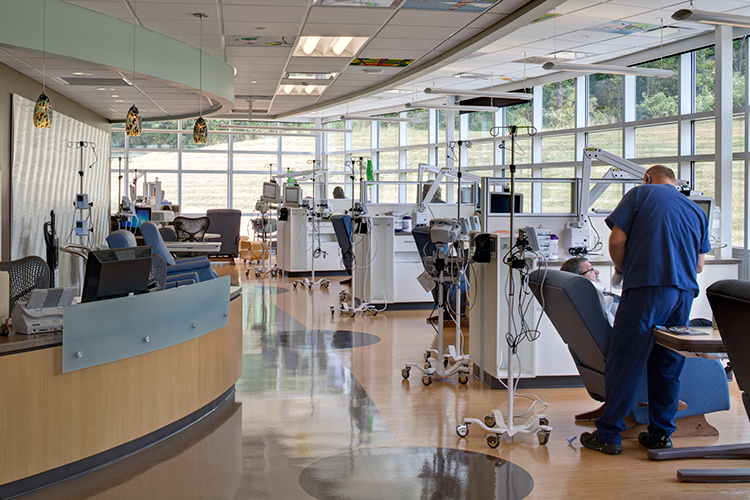A first-hand look at improving patient experience
As 2016 comes to an end, many people find themselves reflecting on the year, their accomplishments and how they can improve in the year ahead. As a marketer for an architecture firm, part of my job is to think about what healthcare clients’ needs are for their facilities, what keeps them up at night and how our team can help them achieve their goals. As a patient, I’ve had the unsolicited opportunity to see it from a different perspective. In April 2016, I was diagnosed with cancer. Over the last eight months, I’ve had more than 70 appointments with physicians, surgeons, nurses, oncologists, genetic counselors, radiation experts and various other cancer specialists. Needless to say, I have spent a lot of time in healthcare facilities this year.
After years of writing about how my firm finds design solutions for healthcare environments, I now find myself thinking about it as a patient. What could make my experience and the experience of other patients more enjoyable? Trust me, there’s nothing you can do to make chemotherapy feel as relaxing as a massage at a posh spa, but I do have a few ideas on how design elements can contribute to a more tolerable experience for patients.
Amenities or Necessities?
Consider the dozens of hours spent during imaging, chemotherapy, surgery consultation, radiation and physician appointments in waiting rooms, exam rooms and treatment spaces. While anxiously waiting and receiving care in these spaces, two things can make or break a patient’s experience: the quality of care they receive and the facilities in which they receive it. I am fortunate to say that I have had the best care imaginable. I had a smart and thoughtful team of cancer experts that mapped out a strategy to save my life, and it worked. While I do not take that lightly, the actual treatment is just half of the equation. The physical spaces in which patients receive care undoubtedly contribute to the healing process. Before I was a cancer patient, I didn’t realize how much this mattered. Reflecting back on my recently completed treatment, I want to share just a few key design elements that influenced my experience.
Patient Privacy
In my opinion, patient privacy is one of the most frequently discussed, yet least thoughtfully executed elements in healthcare facility design. Physicians discuss cancer and other major illnesses every day with patients, perhaps as nonchalantly as someone giving you directions in a foreign country, taking for granted that this is a completely new and unfamiliar subject matter. However, as a patient dealing with a new normal and uncertain future while absorbing new information about a diagnosis and treatment plan, this is a very delicate time. It’s challenging to deal with a new diagnosis, not to mention sharing it with the world before you are used to the idea. I remember sitting in my general physician’s office just three days after finding out I had cancer. I was numb with anxiety and fear. Sitting on the paper-lined table in a small exam room, I could very clearly hear her chatting with patients in the adjacent rooms.

Then, in one loud, swift motion, my physician entered the room, similar to that of the one pictured above, sat down and in a booming voice said, “well, we know it’s cancer.” All I could think about was the patient in the room next to me, overhearing my news through the thin walls while they waited for their antibiotics or annual physical. Sure, the door was closed and I was in a private room, but the sound carried like she was shouting it through a 400,000-watt heavy metal concert speaker. That was my first, but not last experience involuntarily sharing my cancer with complete strangers.
When I first learned that chemotherapy would be part of my treatment plan, I vaguely understood what that entailed. I never had time to contemplate the details of the room or who else would be there. I never considered the fact that as I received my treatment, other patients and their families would be continuously walking by, glancing over at me as I sat less than five feet away from other patients. I often wondered if there was a VIP area for the swanky cancer patients. Maybe they had private rooms and an endless supply of lattes while they were treated. But while I accepted my reality as each new phase presented itself, I also reluctantly accepted the lack of privacy offered during my treatment.
Access to Daylight and Nature
Prior to my cancer experience, the only cancer facility that stood out in my mind was DesignGroup’s Cancer Center for Adena Health in Chillicothe, Ohio. Floor to ceiling windows encase the exterior of the building as patients’ chairs faced toward green space and a healing garden just outside.

That was my only look inside an infusion room prior to my diagnosis. The treatment room where I received chemo had the treatment chairs arranged with their backs to the exterior walls in a U-shape, with the nurses’ station in the center. The building was surrounded by a parking lot and I wouldn’t consider the views to the outside as serene or calming. Despite this, looking back at the time spent in that chair, I would have preferred to look outside rather than my only view being that of other patients and their families.
One Chance to Make a Good First Impression
We’ve all done it; as soon as we arrive at a new place, we size it up and draw conclusions before we even step inside. As I pulled up to the building where I would see my oncologist for the first time, I was already swimming in a sea of uncertainty. I think about how I felt walking into that building, not yet aware that the care I would receive there would ultimately save my life. When I first walked through the front door, I remember immediately soaking in the largest waiting room I’d ever seen, filled with people dealing with a similar diagnosis. I was instantly hit with what felt like a bleak reality. Some of these people had already lost their hair, some seemed really sick and weak. Aside from a handful of rogue cells, I was a strong, long-haired 32-year-old gaining access to a club I never wanted to join. That first impression was a strong dose of reality. Thinking about how it felt to walk in and see other patients at varying stages of cancer, I wonder if there could be a more thoughtful way to soften those first moments in a cancer treatment facility.
Forging Ahead
Let’s face it, no matter where you work, you will inevitably spend time in a healthcare facility, as a patient yourself or with a loved one. The next time you step into an outpatient building or hospital, take a look around and consider your surroundings. How would it feel to be in that space when dealing with life-altering decisions? Does the space contribute to or lessen your anxiety and well-being?
If you are a healthcare designer or facility administrator, put yourself in the shoes of a patient entering that facility for the first time. Think about their sensitivity to sound and privacy, the opportunity to bring daylight in and provide views to nature. Study their path through the building and their first impressions. Does the space build confidence in the quality of care that patients will receive?
This year has reminded me of how fortunate each of us are to wake up each day, filled with possibility. Some of us have the greater fortune to be able to positively impact patients’ lives through the spaces they receive treatment. These spaces are living vessels contributing to ways in which people are healing, learning and growing. Every detail in a building is an opportunity to make those experiences better. Would you consider those details as nonessential amenities, or as vital necessities?
As you hit the ground running with resolutions in the new year, remember the role that spaces play in your lives as designers, health care providers, facility administrators, as people. More importantly, remember that every day and every fleeting experience is a gift. I know I will.

Kendra Brown // Marketing Manager
As the Marketing Manager for DesignGroup, Kendra is responsible for managing the firm’s brand, thought leadership and marketing communications. She is actively involved in SMPS Columbus and the Discovery District Civic Association. Kendra is passionate about sharing the firm’s success stories and connecting with an audience on a human level.
